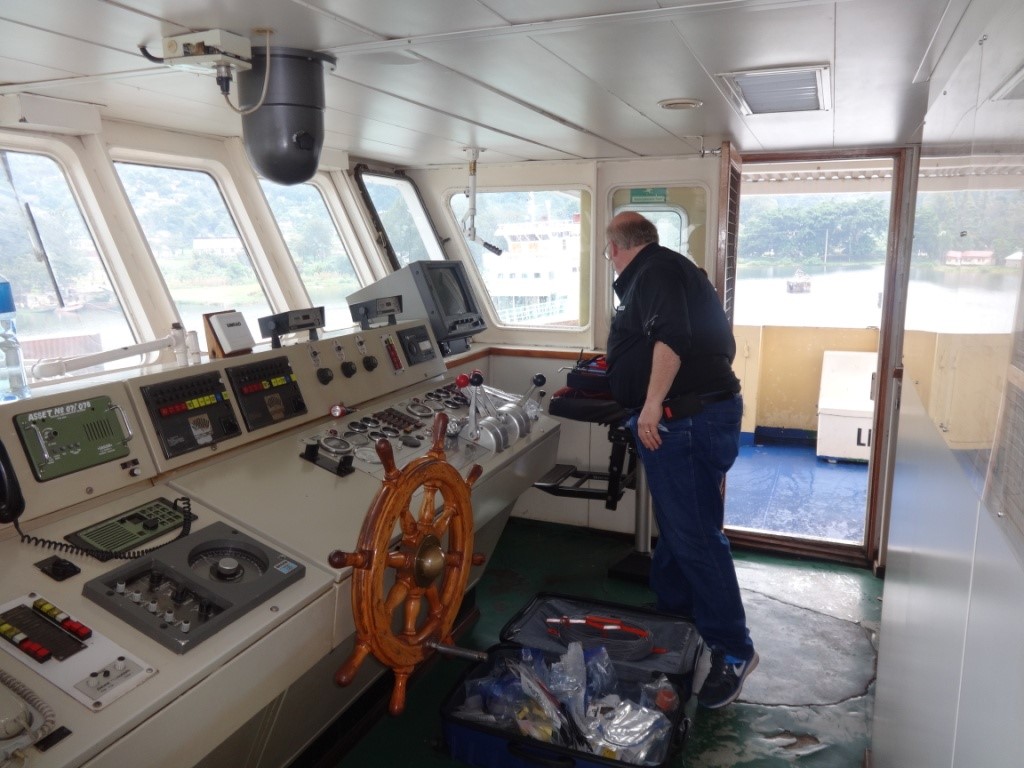LOCATION: Lake Victoria Basin, East Africa
SoMAS Members Involved: Kamazima Lwiza and Thomas Wilson
HyCRISTAL Project
HyCRISTAL is one of five projects in the Future Climate for Africa (FCFA) program working with partners to conduct research for decision-making on a 5-40 year timescale, demonstrated in 2 main pilots for urban and rural to enable adaptive climate-smart livelihood adaptations. These cover two of three “areas of need” from the African Ministerial Council on Environment’s Comprehensive Framework of African Climate Change Programmes.
Description
East Africa (EA) has one of the world’s fastest growing populations. The population is characterized by highest concentrations around lakes and rapid urbanization. The vulnerability to the Climate change is adding to existing problems. HyCRISTAL is driven by EA priorities. EA communities rely on rainfall for food via agriculture. EA’s inland lakes are rain-fed and provide water, transportation, power, fisheries, and recreation. HyCRISTAL will therefore operate in both urban & rural contexts.
Change in water availability will be critical for climate-change impacts in EA, but projections are highly uncertain for rain, lakes, rivers and groundwater, and for extremes. EA “Long-Rains” are observed to be decreasing; while models tend to predict an increase (the “EA Climate paradox”) although predictions are not consistent. This uncertainty provides a fundamental limit on the utility of climate information to inform policy. HyCRISTAL will therefore make best use of current projections to quantify uncertainty in user-relevant quantities and provide ground-breaking research to understand and reduce the uncertainty that currently limits decision making.
HyCRISTAL is working with users to deliver world-leading climate research quantifying uncertainty from natural variability, uncertainty from climate forcings including those previously unassessed, and uncertainty in response to these forcings; including uncertainties from key processes such as convection and land-atmosphere coupling that are misrepresented in global models. Research will deliver new understanding of the mechanisms that drive the uncertainty in projections. HyCRISTAL will use this information to understand trends, when climate-change signals will emerge and provide a process-based expert judgement on projections. Working with policy makers, inter-disciplinary research (hydrology, economics, engineering, social science, ecology and decision-making) will quantify risks for rural & urban livelihoods, quantify climate impacts and provide the necessary tools to use climate information for decision making.
HyCRISTAL collaborates with the FCFA global & regional projects and Coordination Capacity Building and Knowledge Exchange (CCKE), by sharing methods, tools, user needs, expertise & communication. Uniquely, HyCRISTAL will capitalize on the new Lake Victoria Basin – HydroClimate to Nowcasting for Early Warning Systems (LVB-HyNEWS), an African-led consortium, governed by the East African Community, the Lake Victoria Basin Commission and National Meteorological and Hydrological agencies, with the African Ministerial Conference on Meteorology as an observer.
HyCRISTAL is building EA capacity directly through collaboration (11 of 25 HyCRISTAL Co-Investigators are African, with 9 full-time in Africa), including data collection and via targeted workshops and teaching. HyCRISTAL will deliver evidence of impact, with new and deep climate science insights that will far outlast its duration. It will support decisions for climate-resilient infrastructure and livelihoods through application of new understanding in its pilots, with common methodological and infrastructure lessons to promote policy and enable transformational change for impact-at-scale. Using a combination of user-led and science-based management tools, HyCRISTAL will ensure the latest physical science, engineering and social-science yield maximum impacts. HyCRISTAL will deliver outstanding outputs across FCFA’s aims; synergies with LVB-HyNEWS will add to these and ensure longevity beyond HyCRISTAL.
Stony Brook Part of HyCRISTAL
Stony Brook University’s (SBU) role is in two parts. The first part is to install observational equipment on a ferry boat on Lake Victoria to monitor lake surface temperature, ph, chlorophyll, precipitation, photosynthetically active radiation (PAR), air temperature, and wind. The second role is to develop a suite of models to determine climate-related impacts on and fish stocks. SBU will use the output from a Hydro-climate model from the Climate Co-Investigators to force a coupled hydrodynamical and an ecosystem-level model to assess fish-management strategies and effects of climatic forcing on lake ecology, predicting changes in species, especially important food fishes, driven by chlorophyll (proxy for primary production), turbidity, temperature, water level, and other environmental factors.
HyCRISTAL Team
Stony Brook University; University of Leeds; African Centre for Technology Studies; British Geological Survey; Centre for Ecology and Hydrology (UK); Evidence for Development; Jomo Kenyatta University; Loughborough University; Met Office (UK); National Centre for Atmospheric Science (UK); National Fisheries Resources Research Institute (Uganda); North Carolina State University; Practical Action; Tanzanian Meteorological Agency; Ugandan National Meteorological Authority; Ugandan Ministry of Water Resources; University of Connecticut; Makerere University; Maseno University; Walker Institute; Africa Climate Exchange, University of Reading.
The United Kingdom Department for International Development (DFID) and Natural Environment Research Council (NERC).
HyCRISTAL Sponsors
The United Kingdom Department for International Development (DFID) and Natural Environment Research Council (NERC).
First Annual General Meeting of HyCRISTAL scientists in Kampala, Uganda, September 2015
SoMAS Electronics Workshop engineer Thomas Wilson spreading his tools on the MV Serengeti ferry ready for installation of meteorological and hydrological sensors, in Mwanza, Tanzania, January 2016 (Photo credit Lwiza).
Kamazima Lwiza and Thomas Wilson installing communications cable in the engine room of MV Serengeti, 18 January 2016 (Credits Yusufu Wastara).
Morning break over Lake Victoria near Bukoba town, Tanzania, January 16, 2016 (Photo credit T. Wilson)
Bismarck Rocks, named after a famous German Chancellor who served during the Berlin Conference of 1884. (credits T Wilson)









